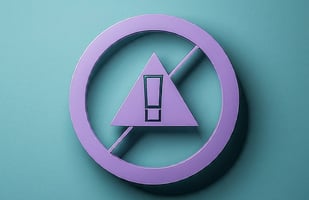In today's ecommerce landscape, the battle for new customers is intense and expensive. Constantly...
The Retention Mindset: Shifting Focus from Acquisition to Lifetime Value

In the world of ecommerce, the relentless pursuit of new customers often comes with a hidden cost. While acquisition is vital, studies consistently show that it can cost five times more to bring in a new shopper than it does to retain an existing one. Neglecting loyal customers leaves a hole in your bottom line – it's the classic "leaky bucket" scenario.
Chasing an endless stream of new leads, without building lasting relationships, limits your long-term growth potential. This is where the retention mindset comes into play. It's about understanding the immense lifetime value (LTV) of your existing customer base and creating experiences that keep them coming back.
A shift towards a customer-centric growth model unlocks sustainability for your ecommerce business, maximizing profits while reducing unnecessary acquisition spending.
The following article dives into the importance of customer retention, maximizing lifetime value (LTV) and practical steps to create a loyal customer base.
The Actual Cost of Acquisition
In the race to grow your ecommerce business, the allure of new customers is strong. But behind the flashy marketing campaigns, generous introductory discounts and onboarding efforts lies a sobering truth - acquisition is expensive. Here's a breakdown of the true costs involved:
- Marketing Spend: From pay-per-click advertising to influencer campaigns, a significant chunk of your budget is often consumed by reaching potential customers.
- Discounts and Promotions: Luring first-time buyers often requires enticing offers, eating into your margins.
- Onboarding: Educating new customers about your products or services takes time and resources.
All these expenses serve one goal: to get that initial sale. However, they don't guarantee loyalty. Think of it like opening the door for a customer – they might try your products once, but if the experience doesn't exceed expectations, they may never return.
This constant battle for new customers is the ecommerce equivalent of the "leaky bucket." You spend a fortune filling it with water (new customers), only to watch it steadily drip out the bottom (customer churn).
Choosing Lifetime Value (LTV)
While focusing purely on the cost of acquiring new customers paints a bleak picture, there's a far brighter metric that deserves attention - Lifetime Value (LTV).
Simply put, LTV is the projected revenue a customer will generate over their entire relationship with your business. Here's a basic formula to help you visualize it:
LTV = Average Order Value x Purchase Frequency x Average Customer Lifespan
Example: A customer who spends $100 per order, buys twice a year and stays loyal for 3 years would have an LTV of $600.
LTV and it's Effect on Profitability
Increasing LTV is the key to unlocking higher profit margins for your ecommerce business. Here's why:
- Repeat Purchases: Loyal customers don't just make a single purchase - they return consistently, generating recurring revenue.
- Increased Spending: Over time, as customers build trust with your brand, they tend to spend more per order.
- Advocacy: Happy & loyal customers often become your biggest fans. They recommend your products to their friends and family, providing free word-of-mouth marketing.
- Reduced Costs: Serving existing customers is much cheaper than constantly acquiring new ones. You already know their preferences and don't need to invest heavily in awareness or onboarding.
Shifting Your Approach / Mindset
True customer retention success goes beyond individual tactics. It requires a fundamental shift in how you define and measure success within your brand.
-
Moving Beyond Acquisition Metrics: While new customer numbers are exciting, don't let them overshadow critical retention metrics like LTV, repeat purchase rate and churn rate. Track these just as diligently to get a true picture of your business health.
-
Customer-Centric Growth: Adopting a "Retention Mindset" means viewing every team, from marketing and sales to customer service and product development, as contributors to customer loyalty. It's about creating a seamless experience that keeps customers happy at every stage of their journey.
-
Addressing the "But...": A common objection is "Don't we always need new customers, though?" Absolutely! Growth requires a balance between acquisition and retention. The key is finding the right ratio based on your business model and allocating your budget accordingly. A leaky bucket approach however, will limit your growth and profitability no matter how many new customers you bring in.
Practical Steps for Re-Orienting Your Business
Shifting to a Retention Mindset isn't just a theoretical exercise, it involves concrete action. The following foundational steps are a great way to start:
Step 1: Know Your Numbers
- Calculate Your Churn Rate: Remember, you can't fix what you don't measure. Use the formula from our introduction to determine your customer churn rate over different periods (monthly, quarterly, etc.). This is your retention benchmark.
- Uncover the "Why": Churn happens for a reason. Gather data to understand the root causes:
- Surveys: Ask lapsed customers directly why they stopped buying. Design surveys to pinpoint specific pain points in their experience. An efficient way to get answers is to use LTV.ai's personalized email / sms outreach to gather individualized feedback.
- Website and Support Analytics: Track website bounce rates on key pages, abandoned carts and the types of support tickets customers are submitting. This data provides clues about where frustrations might occur.
Step 2: Customer Experience is King
Every single interaction with your brand shapes a customer's perception and influences their decision to return. Prioritize CX improvements across the following touchpoints:
- Website and Checkout: Is your site easy to navigate? Is the checkout process frictionless or overly complicated? Small frustrations can lead to abandonment.
- Customer Support: Are response times fast, resolutions helpful and interactions friendly? Every support ticket is an opportunity to turn a frustrated customer into a loyal one.
- Post-Purchase: Did the product arrive on time and as expected? Do you follow up to proactively address any questions or potential issues?
Don't underestimate the impact of even seemingly minor friction points - it's often the details that matter. Focus on creating a consistently positive experience that leaves customers feeling valued.
Step 3: Utilize Hyper-Personalized Marketing
Generic, one-size-fits-all marketing falls flat in today's world. To cultivate true customer loyalty, personalization is essential.
Let's go beyond the basics to hyper-personalization:
- Utilize Customer Data: Your customer data is a treasure trove. Analyze purchase history, browsing behavior, past feedback and individual demographics (location, interests, etc.) to understand what truly resonates with each shopper and segment your customer list accordingly.
- Tailored Offers and Content Don't send everyone the same message. Segment and tailor offers, product recommendations and email content based on customer data, increasing relevance and the likelihood of engagement.
Utilize AI tools like LTV.ai to achieve true hyper-personalization - LTV.ai analyzes each customer's unique behavior and automates hyper-personalized emails and SMS outreach that mentions their specific location, past feedback and relevant product recommendations.
This creates a 1-on-1 experience that significantly drives LTV and increases owned channel sales by 10-25%.
Step 4: Reward Loyalty
Loyalty programs are a great way to foster a sense of belonging and incentivize repeat purchases. However, not all programs are created equal. Here's how to make yours stand out:
-
Go Beyond Basic Discounts: While discounts are a staple, they shouldn't be your only reward. Consider the following:
- Early access to new products or exclusive sales
- Birthday gifts or personalized offers
- Free shipping thresholds that are easy to reach
- Points that can be redeemed for charitable donations (this builds emotional connection)
-
Experiential Rewards: Experiences often have a higher perceived value than simple discounts. Consider partnering with complementary brands to offer exclusive events, workshops or bundled products that excite your customers.
-
Tiered Programs: Create a sense of progression and exclusivity. Higher tiers could unlock premium rewards, access to a dedicated concierge or personalized stylist-type services.
-
Gamification: Make it fun! Use point challenges, badges, leaderboards or elements of surprise to keep customers engaged.
-
The Option of Paid Membership: Consider a paid loyalty program, similar to Amazon Prime. For an annual fee, offer substantial benefits like unlimited free shipping, early access to sales, exclusive content or members-only products. This fosters deep loyalty and a recurring revenue stream.
Wrapping Up
Embracing a retention focused mindset doesn't mean neglecting growth through acquisition. Instead, it's about finding the optimal balance between attracting new customers and nurturing the loyal ones you already have. By prioritizing customer retention, you unlock long-term benefits that fuel sustainable and profitable growth - increased revenue, reduced costs and positive word-of-mouth marketing.
Remember, your existing customer base is your most valuable asset. Invest in their satisfaction, personalize their experiences and reward their loyalty. This is the path to building a brand with lasting success and a truly loyal customer base.






